|
|


|
Links to Africa
Gateway-S
|
|
To have a
PAN-AFRICA-RELATED-URL
added to this unique collection, please forward an e-mail request to the LinkMaster for consideration.
|
LINKMASTER
Click on links in Alphabetic order
1 2 3
A B C
D E F
G H I
J K L
M N O
P Q R
S T U
V W X
Y Z
All rights reserved!
|
Africa related Pages
Click and Go
|
[ LINK-S ]
Links starting with S
|
|
SADE
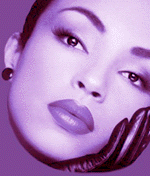
|
Sade is one of those very rare artists who is so loved and deeply unique, she cannot be duplicated. Her albums have sold more than thirteen million copies in the U.S. and more than 32 million worldwide. Sade was born Helen Folesade Adu in Nigeria, the daughter of a Nigerian teacher and an English nurse.
|
Sahara
"Mother of all Deserts"
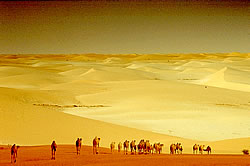
|
Going through Africa from the North to the South, you will first encounter six arab-berber countries, and then The Sahara, the greatest desert on earth. The Sahara splits Arab Africa from Sub Sahara Africa.
|
|
Sahel
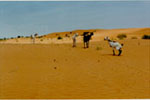
|
The Sahel is the strip of land that separates savanna from the desert. Sahel comes from the Arabic word for "edge" or "border" because it is the edge of the desert. The Sahel is shrinking at an alarming rate. Animals have been allowed to graze on its fragile land, which has destroyed the vegetation. The people who live along the Sahel have caused it to shrink by cutting trees and bushes for fuel. Without the trees and bushes to hold it in place, the thin topsoil is of the Sahel blown away, leaving stony land where neither grass nor crops can grow. The Sahara and the Kalahari Desert creep one hundred miles closer to one another every year as desertification and erosion spread.
|
|
Princess Lalla(Lady) Salma
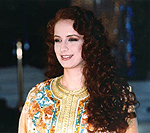
|
Salma Bennani, a native of Fez, became Her Royal Highness Princess Lalla(Lady) Salma. During a private ceremony on 21 March 2002, 38-year-old King Mohammed VI of Morocco married with the 24-year-old astonishing beautiful computer engineer Salma Bennani. Salma Bennani is a native of Fez, who has worked for Omnium Nord-Africain. From today onwards she will be called Her Royal Highness Princess Lalla Salma. The "fairytale" wedding itself was celebrated with three days of festivities in Marrakech.
|
|
Sorious Samura


|
Sorious Samura won international acclaim for his documentary Cry Freetown, which highlighted atrocities that were taking place in his native Sierra Leone.
"It is my belief that unless we Africans can tell our own story within content and show an Africa that has not been seen before the West will continue to throw their hands up in despair believing that our continent is full of a bunch of confused savages that is now beyond salvation/redemption. The only way the West can understand and treat us seriously is to hear the African story first hand from the African perspective rather than the usual whitie version - so why not take the risk if that can help turn things around for our Continent".
|
San people
"Bushmen"
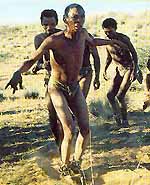
|
The aboriginal inhabitants of Botswana, who have made the Kalahari their home for at least 30,000 years, are the San, or bushmen. The San number about 60,000 today, constituting a small but fascinating cultural minority in the country. Almost two millennia ago, a Bantu people known as the Tswana arrived, supplanting the San and now constituting the great majority of the population.
|
|
Sankofa

|
Sankofa is an Akan word that means, "We must go back and reclaim our past so we can move forward; so we understand why and how we came to be who we are today." Written, directed and produced by Ethiopian born filmmaker Haile Gerima, SANKOFA is a powerful film about Maafa-the African holocaust. Done from an African/African-American perspective, this story is a vastly different one from the generally distorted representations of African people that Hollywood gives us. This revolutionary feature film connects enslaved black people with their African past and culture. It empowers Black people by showing how African peoples desire for freedom made them resist, fight back, and conspire against their enslavers, overseers and collective past through the vision on Mona, who visits her ancestral experience on a new world plantation as Shola.
|
|
Save the Gorillas
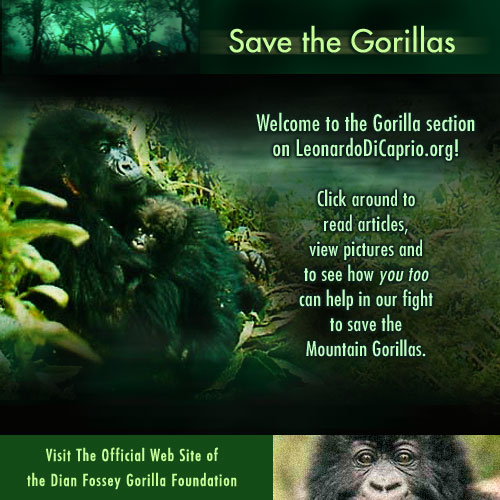
|
LEONARDO DICAPRIO CHARITABLE FOUNDATION
The challenges and problems of human existence are as daunting as ever, but the prospect of major gains in human well-being is historically unique. The Leonardo DiCaprio Charitable Foundation is animated by a vivid sense of the wonderful possibilities of the future and is grounded in a consciousness of the responsibility to ensure that our resources are used wisely and well.
Leonardo DiCaprio has always been dedicated towards helping the environment in any way that he can. One of these ways is through his charitable foundation, which gives donations to worthwhile causes around the world. Hopefully, through increased awareness and action, these groups can help to make a change for the better. If you want more information on Leonardo, please go to www.leonardodicaprio.com
|
|
Albert Schweitzer
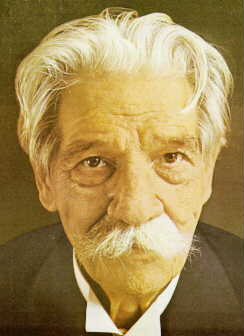
|
Official Homepage of the International Association (AISL) ALBERT SCHWEITZER with information about his life and work. At the age of 30, aware of the desperate need of Africans for medical care, he decided to become a medical doctor and devote the rest of his life serving the people of Africa. In 1913, at the age of 37, Dr. Schweitzer and his wife, Hélène, opened a hospital in Lambaréné, Gabon - then a province of French Equatorial Africa. He devoted his life from then on to providing health care for the people in the area. In 1953, at the age of 78, Albert Schweitzer was awarded the Nobel Peace Prize for the year 1952. In the speeches and writings during the last twelve years of his life, he emphasized the dangers of nuclear energy, nuclear testing, and the nuclear arms race between the superpowers.
When we observe contemporary society one thing strikes us. We debate but make no progress. Why? Because as peoples we do not yet trust each other.
(Signed: Albert Schweitzer)
|
|
Scramble for Africa
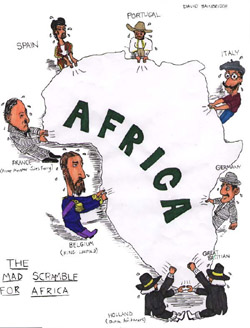
|
With all respect to missionaries and Albert Schweitzer, the majority of Westerners who came to Africa did not come to make good and worthy people of the Africans, they came to good and worthy people and brought fear, destruction of tribes and kingdoms, of a way of life that even after years of independence has never been regained. There were the discoverers who came to find what was there, but soon after them the race for Africa began. At the end of the 19th century, a period of international rivalry, often dubbed the "Scramble for Africa", the European powers laid claim to African territories. The various claims of the nations were settled at the Berlin Conference of 1884-1885. At this time, most of the continent of Africa was divided into colonies: France claimed the majority of West Africa; Germany received much of the eastern territory that is now Tanzania; Belgium got the Congo region; Portugal retained control of Mozambique and Angola; and Britain received the remainder of the continent. Africans were not invited to attend the conference and therefore received not even an acre of their own land. When the colonial powers left Africa, it handed authority not to traditional rulers, who were viewed as having some legitimacy, but to a horde of literate hustlers who did
well in the colonial bureaucracy and or colonial army, and started to make up the ruling class.
|
|
SADC
Southern African Development Community

|
The Southern African Co-ordination Conference (SADCC), the forerunner of the Southern African Development Community (SADC), was formed in Lusaka, Zambia on April 1st, 1980, following the adoption of the Lusaka Declaration - Southern Africa: Towards Economic Liberation by the nine founding Member States.
SADC has 14 Member States namely:
Angola - Botswana - Democratic Republic of Congo (DRC) - Lesotho - Malawi - Mauritius -
Mozambique - Namibia - Seychelles - South Africa - Swaziland - Tanzania - Zambia -
Zimbabwe
|
|
SCSA
Supreme Council for Sport in Africa

|
The Supreme Council for Sports in Africa was established in July 1965 in Brazzaville as the Comite Permanent du Sport Africain (CPSA). Its present title was adopted in Bamako on 14 December 1966. Since 3 July 1977, the SCSA has been functioning as a specialised agency of the Organization of African Unity (OAU). The SCSA has its headquarters in Yaoundé, Cameroon.
The SCSA aims to seek for and implement all measures and means likely to foster the development of sports in Africa with regard to structures and sporting events; persuade governments of African countries to undertake to protect and promote physical education and sports in and out of school; ensure the propagation and respect for the Olympic ideal across the continent and co-ordinate the action of African National Olympic Committees; foster sports development in Africa so that she may be worthily represented in world sports competitions, especially the Olympic Games; orientate and make sports in Africa serve African unity by consolidating mutual understanding and friendship among those who practice it and its officials; combat all forms of racial, religious or political discrimination in sports towards a country or an individual; study all questions bearing on the world sports movement and adopt a common stand regarding the position and participation of African countries; foster the action of African Sports Confederations and bring about the setting up of those that do not yet exist; organise the All-Africa Games and ensure their continuity; foster the setting up of Sports Development Zones in Africa so as to regionalise continental competitions and guide, co-ordinate and back up their activities.
|
|
VISIT SENEGAL
|
Senegal is the buzz place of West Africa – from its hip music and its sophistication to its fantastic capital Dakar. It gets more visitors than any other country in West Africa. One can be overwhelmed by the fantastic variety of music available in nearly all countries on this part of Africa.
|
Shaka Zulu
(1818-1828)
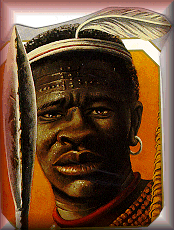
|
SHAKA: KING OF THE ZULUS
A strong leader and military innovator, Shaka is noted for revolutionizing 19th century Bantu warfare by first grouping regiments by age, and training his men to use standardized weapons and special tactics. He developed the "assegai" a short stabbing spear, and marched his regiments in tight formation, using large shields to fend off the enemies throwing spears. Over time, Shaka's troops earned such a reputation that many enemies would flee at the sight of them. He built the Zulus into a nation of over a million strong. He was also sucessful in uniting all the ethnic groups in South Africa against the despicable vestiges of colonialism.
|
|
SIAO
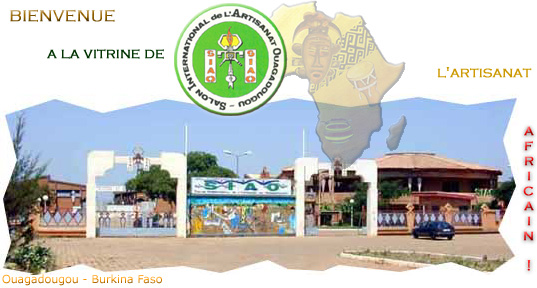
|
The Ouagadougou International Arts and Crafts Fair in Burkina Faso is a specialised fair. It brings into direct contact African craftsmen, producers and exporters, as well as professional visitors, collectors and other lovers of African handicraft. Therefore, only handicraft products are admitted. Any other product introduced in the fair will be purely and simply withdrawn. The fair is held every other year, late in October in even years. The next fair is in October 2002.
|
|
VISIT SIERRA LEONE
|
Sierra Leone always has been an excellent place for travelers. The landscape varied and stunningly beautiful; many beaches and wildlife reserves can be visited without a vehicle. The people are eternally friendly, if you show respect to someone you will have a friend for the rest of your visit.
|
|
Lucas SITHOLE
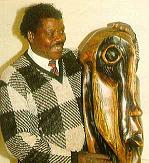
|
This site is presented by The Haenggi Foundation Inc., Johannesburg / Basel, to honour the late Lucas SITHOLE,
one of South Africa's internationally best known sculptors. At this site You can view more than 390 exciting
sculptures by Lucas T. SITHOLE out of some 800 recorded works.
|
|
VISIT SOMALIA
|
Somalia has an ethnic homogeneity unusual in Africa, with SOMALI constituting 98 percent of the population, but the Somali are divided into six major clans (including the Isaaq of the north, the Ogadeni of the south, and the Hawiye of central Somalia) and thousands of subclans that command people's primary loyalties and exercise power through temporary alliances with other subclans.
|
|
SOS Children's Villages

|
SOS Children's Villages offer abandoned, orphaned and destitute children - regardless of race, nationality or creed - a new and permanent home, and prepare them for an independent life. SOS-Kinderdorf International is the umbrella organisation to which all national SOS Children's Village Associations are affiliated.
|
|
SOS-JED/YOCHID
"THE FIZI CHILDREN"
BURUNDI - DR CONGO - TANZANIA
|
SOS JEUNESSE ET ENFANCE EN DETRESSE "SOS-JED" (SOS YOUTH AND CHILDHOOD IN DISTRESS "SOS-YOCHID") is a non-profit NGO committed to improve the conditions of Children and Youths living in desperate circumstances in Fizi territory, South-Kivu Province in the East of the Democratic Republic of Congo. Its activities are directed to Training and Education, Health Services and Information, Supporting Youth self-help groups, Fighting Child and Maternal Malnutrition, HIV/AIDS Campaigns, Childcare with a Programme to assist War Orphans, Defense and information of children rights,... Further activities are linked with our current Programme of Humanitarian Assistance to War Displaced Civilians in Fizi territory - D.R. Congo.
|
|
VISIT SOUTH AFRICA
|
South Africa is a 'rainbow nation' of many colours and cultures, encompassing Zulu, Tswana, Khosa, Sotho, Indian, Afrikaans and those of British origin. South Africa has staggeringly beautiful rural areas such as the Cape Winelands, the towering dunes of the Wild Coast, the magnificent game parks of Kruger and Zululand, and the Kalahari and Karoo Deserts, barren for much of the year but a carpet of flowers in spring, the possibilities for tourists are endless.
|
Wole Soyinka
Nobel Prize in Literature 1986
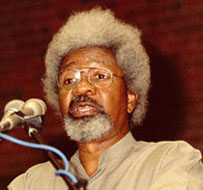
|
Wole Soyinka was born on 13 July 1934 at Abeokuta, near Ibadan in western Nigeria. After preparatory university studies in 1954 at Government College in Ibadan, he continued at the University of Leeds, where, later, in 1973, he took his doctorate. During the six years spent in England, he was a dramaturgist at the Royal Court Theatre in London 1958-1959. In 1960, he was awarded a Rockefeller bursary and returned to Nigeria to study African drama. At the same time, he taught drama and literature at various universities in Ibadan, Lagos, and Ife, where, since 1975, he has been professor of comparative literature. In 1960, he founded the theatre group, "The 1960 Masks" and in 1964, the "Orisun Theatre Company", in which he has produced his own plays and taken part as actor. He has periodically been visiting professor at the universities of Cambridge, Sheffield, and Yale. During the civil war in Nigeria, Soyinka appealed in an article for cease-fire. For this he was arrested in 1967, accused of conspiring with the Biafra rebels, and was held as a political prisoner for 22 months untill 1969. Soyinka has published about 20 works: drama, novels and poetry. He writes in English and his literary language is marked by great scope and richness of words.
|
|
Henry Stanley
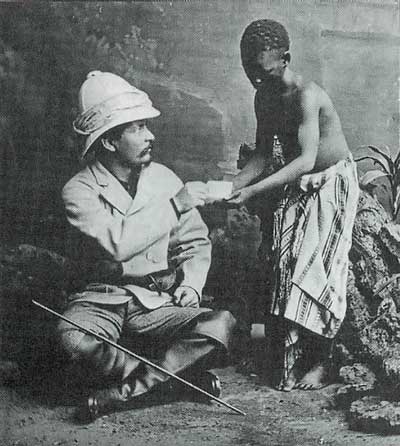
|
In 1871 Henry Stanley a 28 year-old foriegn correspondent had heard rumors that a white man was living at the Vilage of Ujiji near lake Tanganika. On November 10, 1871 Stanley entered the village and there he found the sick Livingstone. Stanley had brought the correct medical supplies to let Livingstone recover. In 1872 both Stanley and Livingstone had gone to explore lakes and rivers of Central Africa. Livingstone had died and was remembered as a hero for his explorations in Central Africa. Stanley had then left Livingstone to research further.
|
|
Star of Africa
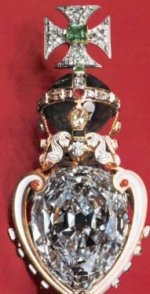
|
Many Diamonds are found in several sub Saharan regions. One carat of diamond is 0.2 gram. That means a 5 carat diamond (costing at least $50,000) weighs only 1 gram. The Cullinan is the biggest diamond ever. It weighs 3106 carats! It was discovered in South Africa on the site of the Premier Mines. Originally, it was evaluated at around 150,000 English pounds. The largest stone cut from the Cullinan is the Star of Africa, now among the British Crown Jewels. It was given to King Edward as a birthday gift. It weighs 530.20 carats and has 74 facets and is still the largest cut diamond in the world.
|
|
STAR MODEL AFRICA

|
|
|
Steve's Website

|
A non-commercial educational site covering ancestral Bushman (San) rock art,
traditional and contemporary African art, native plants and birds of
southern Africa, travel in southern Africa, history and current events in
Zimbabwe, hydrology and geology of the Okavango Delta and Etosha Pan, and
much more. The site has photos, slide shows, maps, satellite images,
recorded bird songs, and music.
|
|
Saleisha Stowers
Top Model

|
Saleisha Stowers (born January 10, 1986), is an African American fashion model
who became the winner of Cycle 9 of America's Next Top Model.She attended Camp
T-Zone, Tyra Banks' self-esteem camp for girls when she was 14. Before appearing
on Cycle 9, Saleisha was signed with Photogenics Model Management and had also
appeared in a commercial for fast-food restaurant Wendy's, with actor Tom Lenk.
She was also an extra in an episode of the TV series Ugly Betty and on two episodes
of the Tyra Banks Show, modeling for Rami, Project Runway season four contestant.
She has also modeled for Especially Yours wigs, and was featured in a fashion
spread for In Touch magazine. She was recruited for America's Next Top Model,
which she subsequently won.
|
|
VISIT THE SUDAN
|
The Sudan was the Arabic countries passage into Africa, a bridge between Arab and African worlds, Sudan is Africa's largest country. What used to be the ancient Kingdom of Nubia is now one of the biggest countries in Africa.
|
|
Sudd Swamp
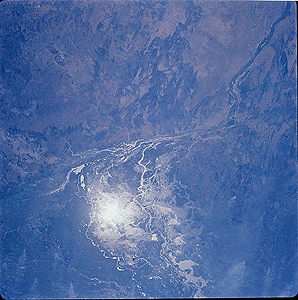
|
The Sudd Swamp of south central Sudan is a huge environmentally sensitive wetlands area where humans are beginning to affect the ecology of the region. Sudd is Arabic for barrier. This region is the world's biggest swamp, larger than the state of Pennsylvania. The Sudd's aerial extent varies from about 6370 square miles (16,500 square kilometers) in the dry season (winter months) to perhaps 12 350 square miles (32,000 square kilometers) during the summer rains. The western branch of the Nile River, called the White Nile, provides most of the water for this region. Initially, the word "sudd" was used to describe the great mass of floating and swampy vegetation that covers this region.
|
|
Sustainable Harvest

|
Sustainable Harvest is the leading North American specialty green coffee
importer of fair-trade, organic and shade-grown coffees. The company sources
top quality (unroasted) green coffees from small family farms and cooperatives,
and develops long term relationships between growers and buyers. To verify the
integrity of our organic and other sustainable coffee claims, Sustainable Harvest
uses third-party agencies, such as Quality Assurance International for Organic,
TransfairUSA for Fairtrade, and the Smithsonian Migratory Bird Center for Shade-Grown.
|
Swahili
Children
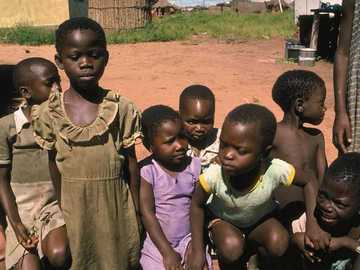
|
The Swahili is the name given to the coastal people who historically could be found as far North as Mogadishu (Somalia) and as far south as the Rovuma River (Mozambique). They share a common language, widely spoken by non-Swahilis, called Ki-Swahili, and enjoy a city-based fusion of African and Arab culture. Swahili is spoken by an estimated 50 million people and, after Arabic, is the most widely understood language in Africa. It is the official language of Tanzania and Kenya and is used extensively in Uganda and the eastern provinces of Zaire. In Burundi and Rwanda, it is known and used in major urban centers, but is not widely known or extensively used in the monolinguistic countryside.
|
|
VISIT SWAZILAND
|
Swaziland is the smallest country in the southern hemisphere and has good wildlife reserves. In 1965 white rhino were re-established in the kingdom after an absence of 70 years, and since then there has been an ongoing battle to protect them from poachers. A happy postscript was the donation by the Taiwanese government in 1996 of enough money to purchase six black rhino.
|
|
SWIHA
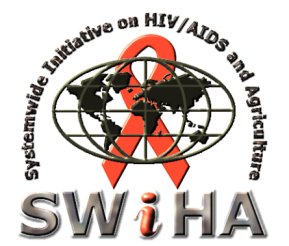
|
National governments worldwide and the international community have recognized HIV/AIDS as an issue of human development. The CGIAR System-wide Initiative on HIV/AIDS (SWiHA) joins sixteen international agricultural centers (IARC) of the CGIAR for intervention against the impact of HIV/AIDS on agriculture, agriculture productivity, food security and poverty for the benefit of communities and farm-families worldwide that are, or not afflicted by HIV/AIDS pandemic. The Initiative pulls existing synergy, avoids duplication and forge efficient use of human, material, financial and knowledge-based resources in the global fight against HIV/AIDS.
|
|
To have your URL also added to these Internet gateways, please forward an
e-mail request to the LinkMaster at:
|
LinkMaster
GOTO Alphabetic links
1
2
3
A
B
C
D
E
F
G
H
I
J
K
L
M
N
O
P
Q
R
S
T
U
V
W
X
Y
Z
All rights reserved!
|
|
|---|
|